|
|
|
|
SEMPERVIVUM
SPECIES:
S. albidum cdw127
S. altum cdw344
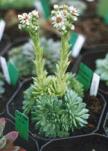
S. andreanum cdw39
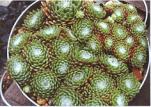
S. arachnoideum var. arachnoideum
cdw2
S. arachnoideum var. arachnoideum fr. Alps
Rhetiques (Monte Tonale) cdw780
S. arachnoideum var. arachnoideum fr. Bellach
cdw1295
S. arachnoideum var. arachnoideum fr. Colle
di Finestra cdw796
S. arachnoideum var. arachnoideum fr. Engadin cdw1297
S. arachnoideum var. arachnoideum fr. Fuldera,
Val Müstair cdw1298
S. arachnoideum var. arachnoideum fr. Gardasee,
Italie cdw1299
S.
arachnoideum var. arachnoideum fr. Gorges du Valais
cdw1300
S. arachnoideum var. arachnoideum fr. Lago Sambucco cdw1301
S. arachnoideum var. arachnoideum fr. Latsch, Albula-tal cdw1302
S. arachnoideum var. arachnoideum fr. Liddes,
Val d’Entrement cdw1303
S. arachnoideum var. arachnoideum fr. Lötschental, Fafleralp cdw1304
S. arachnoideum var. arachnoideum fr. Maltatal (Oostenrijk) cdw798
S. arachnoideum var. arachnoideum fr. Martell-tal,
Bozen (It) cdw1305
S. arachnoideum var. arachnoideum fr. Monte
Cervino, Piemonte cdw1306
S. arachnoideum var. arachnoideum fr. Piatra Cariulu, Königsstein (Roemenie) cdw1307
S. arachnoideum var. arachnoideum fr. Pina bei Maloja (Zwit.) cdw1308
S. arachnoideum var. arachnoideum fr. Pustertal, Osttirol (Oost.) cdw1309
S. arachnoideum var. arachnoideum fr. Queyras cdw1310
S. arachnoideum var. arachnoideum fr. Slamat
cdw1296
S. arachnoideum var. arachnoideum fr. Weppen cdw1311
S. arachnoideum var. arachnoideum fr. Zinal-Rothorn
(Zwit.) cdw1312
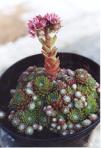
S. arachnoideum 'Minor' cdw28
S. arachnoideum ‘Albiflorum’ cdw1229
S. arachnoideum 'Albion' cdw131
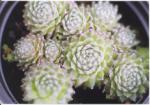
S.
arachnoideum ‘Album Roseum’ cdw1231
S.
arachnoideum ‘Aureum cdw858
S.
arachnoideum 'Glabrum' cdw129
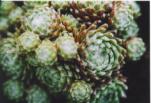
S. arachnoideum 'Gnaphalum' cdw130
S.
arachnoideum ‘Minutum’ cdw1315
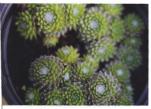
S. arachnoideum ‘Sargentii’ cdw1275
S.
arachnoideum ‘Stansfieldii’ cdw1284
S,
arachnoideum ‘Timofejeva’ cdw1287
S. arachnoideum fr. Kl. Scheidigg cdw165
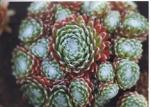
S. arachnoideum fr. Fextal cdw430
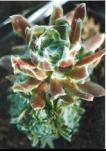
S. arachnoideum fr. Palliviflora cdw160
S. arachnoideum var. brioides
cdw128
S. arachnoideum var. doellianum cdw438
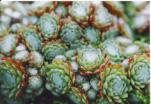
S. arachnoideum var. glabrescens cdw208
S.
arachnoideum var. glabrescens hetrichum cdw1313
S. arachnoideum var. Moggridgei cdw1314
S. arachnoideum var. sanguineum cdw476
S. arachnoideum var. tomentosum cdw26
S. arachnoideum var. tomentosum fr. Alteschgebiet, Wallis cdw1316
S.
arachnoideum var. tomentosum fr. Col Bayard
cdw1317
S.
arachnoideum var. tomentosum fr. Glenic (Centraal Massief) cdw804
S.
arachnoideum var. tomentosum fr. Pierlas cdw792
S.
arachnoideum var. tomentosum fr. Sion cdw1318
S.
arachnoideum var. tomentosum fr. St. Marien cdw801
S. arachnoideum var. tomentosum fr. Coll. Vallee du Fournel cdw757
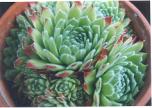
S.
arachnoideum x calcareum cdw520
S. arachnoideum x montanum cdw
S. arachnoideum x nevadense cdw514
S. arachnoideum x pittonii cdw62
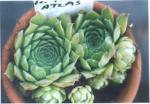
S. atlanticum fr. Mount
Atlas cdw556
S. atlanticum fr. Auikamaden cdw183
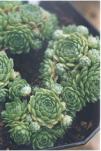
S. atlanticum 'Edward Balls' cdw41
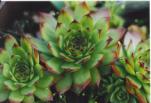
S. balcanicum cdw345
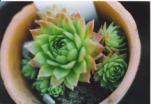
S. ballsii fr. Smolika cdw211
S. ballsii fr. Tschumba Petzii cdw212
S. x barbulatum cdw527
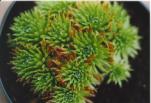
S. x barbulatum nm. hookeri cdw52
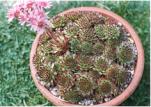
S. borissovae cdw217
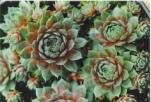
S. x calcaratum cdw65
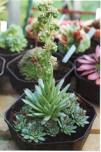
S. calcareum cdw25
S.
calcareum fr. Cheiron, Alpes
Maritimes cdw1319
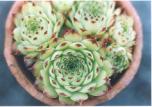
S. calcareum fr. Col de Bayard cdw166
S.
calcareum fr. Col de Cante
cdw1226
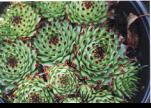
S. calcareum fr. Gleize cdw489
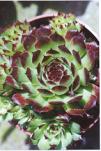
S. calcareum fr. Guillaumes
cdw557
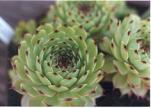
S. calcareum fr. George du Cians cdw220
S.
calcareum fr. La Colle St.
Michel (Alpes de Haute Provence) cdw1320
S.
calcareum fr. La
Tour-sur-Tinee cdw786
S.
calcareum fr. La Vanoise (Savoie)
cdw1321
S.
calcareum fr. Malaucéne cdw1322
S.
calcareum fr. Mont Viso cdw1227
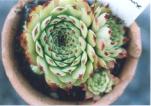
S. calcareum fr. Mont Ventoux cdw222
S. calcareum fr. Petite Ceuse cdw756
S. calcareum
fr. Pierlas cdw788
S.
calcareum fr. Route d’Annot cdw1323
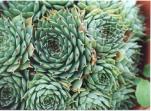
S.
calcareum fr. Triora cdw490
S.
calcareum fr. Utelle cdw793
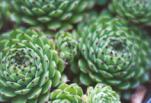
S. cantabricum cdw43
S.
cantabricum subsp. Cantabricum fr. Coll Bulnes nr. 1 cdw761
S.
cantabricum subsp. Cantabricum fr. Coll Bulnes nr. 2 cdw758
S.
cantabricum subsp. Cantabricum fr. Jou Bajo cdw759
S.
cantabricum subsp. Cantabricum fr Pena de Llesba cdw762
S. cantabricum subsp. Cantabricum fr. Picos de Europa cdw765
S.
cantabricum subsp. Cantabricum
fr.Portilla de la Reina 1300m cdw805
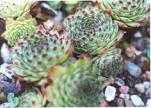
S. cantabricum subsp. guadarramense fr. Lobo
nr 2 cdw224
S.
cantabricum subsp. Guadarramense
fr. Collado de las Zorras cdw785
S.
cantabricum subsp. Guadarramense
fr. Collado de las Zorras cdw790
S.
cantabricum subsp. Guadarramense fr. Pico Maliciosa cdw807
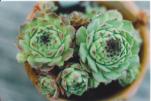
S. cantabricum fr. Lieteregos cdw558
S. cantabricum fr. Logo de Ecol nr 1 cdw525
S. cantabricum fr. Navafria cdw225
S.
cantabricum subsp. Urbionense fr. Coll El Gaton 2000m cdw766
S. cantabricum subsp. Urbionense fr. Coll El Gaton 1950 m zuidwestelijk cdw767
S.
cantabricum subsp. Urbionense fr. Laguna negra de Urbion
cdw768
S.
cantabricum subsp. Urbionense fr. Puerto de Piqueras cdw771
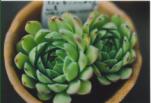
S. cantabricum subsp. urboniense fr. Valvanera cdw526
S.
cantabricum subsp. (Gredos)
fr. Callejon des los Lobos cdw808
S.
cantabricum subsp. (Gredos) fr. Coll. Portilla del Rey (oostelijk) cdw769
S.
cantabricum subsp. (Gredos) fr. Coll. Portilla del Rey (westelijk) cdw770
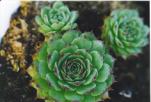
S. caucasicum cdw227
S.
caucasicum fr. Ordzonikidze (Georgie) cdw1325
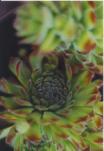
S. x christii cdw228
S. x
christii fr. Piamprato (It.) cdw784
S. x
christii fr. Valtournenche cdw772
S. charadzeae cdw347 en 1327 (Wills)
S.
charadzeae cdw1326 (Gmeinder)
S.
charadzeae cdw 1328 (Zeppelin)
S. ciliosum fr. Ali Botusch cdw723
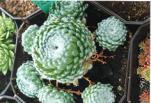
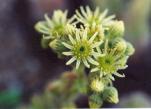
S. ciliosum var. borisii cdw44
S. ciliosum var. galicicum fr. Mali
Hat cdw724
S. ciliosum x marmoreum cdw521
S. davisii cdw440
S.
davisii fr. Nemrut Dag near Malatya
(Turkije) cdw1329
S. degenianum fr. Domokos cdw1341
S. dolomiticum cdw441
S. dolomiticum
fr. Rifugio Biella nr. 1 cdw774
S. dolomiticum
fr. Rifugio Biella nr. 3 cdw773
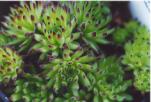
S. dolomiticum x montanum cdw236
S. dzhavachischvili cdw348
S.
erythraeum (Dillmann) cdw1337
S.
erythraeum var. blandum (Schara) cdw1338
S.
erythraeum fr. Pirin cdw1339
S.
erythraeum fr. Rila cdw1340
S. x fauconnetti cdw240
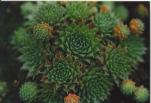
S. x fauconnetti nm thompsonii cdw68
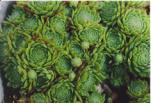
S. x funckii cdw45
S. giuseppii cdw46
S.
giuseppii fr. Coll Coriscao cdw763
S. giuseppii fr. Vega de Liordes oostelijk (Picos de Europa) cdw760
S. giuseppii fr. Vega de Liordes westelijk cdw764
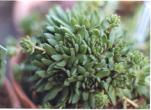
S. grandiflorum cdw247
S.
grandiflorum fr. Piamprato cdw795
S.
grandiflorum fr. Coll.
Valtournenche (It.) cdw782
S.
grandiflorum ‘Album’ cdw1333
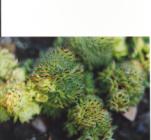
S.
grandiflorum 'Fasciatum' cdw248
S. grandiflorum 'Keston' cdw249
S. x
hayekii (grandiflora x tectorum) fr. Breuil-Cervinia) cdw778
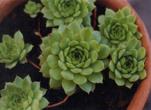
S. ingwersenii cdw258
S. ispartae cdw349
S. italicum fr. Monti Lepida cdw350 en 1343
S. kindingeri cdw524
S. kindingeri (Bot. Gart. Akureyri) cdw1336
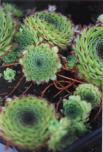
S. kosaninii cdw54
S. kosaninii fr. Koprovnik cdw523
S.
leucanthum (Bot. Gart. Munchen) cdw1334
S.
leucanthum fr. Rila (Bulg.) cdw1335
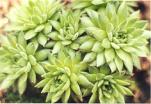
S. macedonicum cdw269
S. marmoreum cdw55
S. marmoreum fr. Kanzan Gorge cdw274
S. marmoreum fr. Monte Tirone cdw275
S. marmoreum fr. Okol cdw276
S. marmoreum var. dinaricum cdw522
S. minus cdw599
S. montanum fr. Anchisis cdw486
S. montanum fr. L'Arbizon cdw492
S. montanum fr. Windachtal cdw491
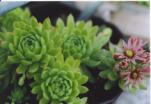
S. montanum var. burnatii cdw283
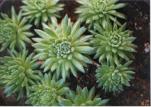
S. montanum var. stiriacum cdw58
S. montanum var. stiriacum fr. Mauterndorf cdw515
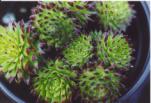
S. montanum var. stiriacum 'Lloyd Praeger' cdw516
S. nevadense cdw427
S. nevadense fr. Coll.Calar de Santa Barbara cdw777
S. nevadense fr. El Chullo cdw781
S.
nevadense fr. Coll. Peniones de San Francisco nr. 1 cdw776
S. nevadense fr. Coll. Peniones de San Francisco nr. 2 cdw775
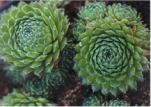
S. nevadense 'Hirtellum' cdw59
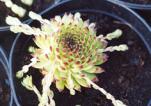
S. octopodes var. apetalum cdw60
S. ossetiense cdw285
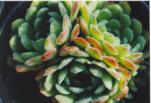
S. patens cdw428
S. x piliferum n-subsp. Pomelii fr. Roc Orque (Fr.) cdw791
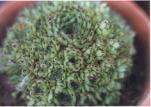
S. pittonii cdw342
S. pumilum fr. Adyl Su nr 1 cdw297
S. pumilum fr. Adyl Su nr 2 cdw298
S. pumilum fr. Armchi
cdw299
S. pumilum fr. Elbruz nr 1 cdw300
S. pumilum fr. Elbruz nr 2 cdw301
S.
pumilum fr. Tazbegi-Terek Valley (Georgië) cdw1342
S. reginae-amaliae fr. Kambeecho nr 2 cdw305
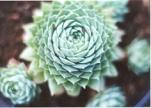
S. reginae-amaliae fr. Mavri Petri cdw306
S. reginae-amaliae fr. Peristeria cdw307
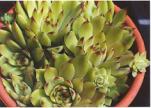
S. reginae-amaliae fr. Sarpun cdw308
S. reginae-amaliae fr. Vardusa cdw518
S. x roseum cdw517
S. x
roseum fr. Monte Padon (It.) cdw779
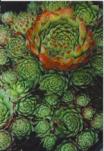
S. x roseum 'Fimbriatum' cdw63
S. x
rupicolum (montanum x wulfenii) fr. Monte Padon (It.) cdw783
S. ruthenicum cdw442
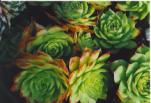
S. sosnowski cdw351
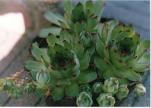
S. tectorum cdw3
S.
tectorum ‘Album’ cdw1359
S.
tectorum fr. Mont Ventoux cdw787
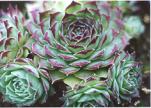
S. tectorum fr. Sierra del Cadi cdw318
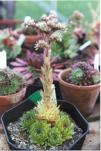
S. tectorum subsp. alpinum cdw67
S.
tectorum subsp. alpinum fr Sion cdw1344
S.
tectorum subsp. aureggii cdw1345

S. tectorum subsp. glaucum cdw317
S. tectorum subsp. boutignyanum fr. Pla de la Barraca (Spanje) cdw789
S.
tectorum subsp. boutignyanum fr. Roc, St. Bertrand
cdw1346
S.
tectorum subsp. clusianum cdw1347
S.
tectorum subsp. corymbosum cdw1348
S.
tectorum subsp. lamottei cdw1349
S.
tectorum subsp. murale fr. Coll. Corneaux-Neufchatel
cdw1350
S.
tectorum subsp. rhenanum cdw1351
S.
tectorum subsp. rupestre cdw1352
S.
tectorum subsp. tectorum fr. Alubula-tal cdw1353
S. tectorum subsp. tectorum fr. Champex cdw1354
S. tectorum subsp. tectorum fr. Conflans cdw1228
S. tectorum subsp. tectorum fr Liddes, Val d’Entrement cdw1355
S. tectorum subsp. tectorum fr. Mala Mojstrovika (Slowakije) cdw1356
S. tectorum subsp. tectorum fr. Mont Blanc cdw1357
S. tectorum subsp. tectorum fr. Val Bordolo (Zwit) cdw1358
S. thompsonianum cdw1360
S.
transcaucasicum cdw69
S. x
vaccari cdw324
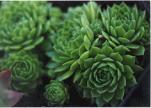
S. vicentei fr. Gaton cdw122
S. x widderi cdw327
S. wulfenii (Gmeinder) cdw1361
S.
wulfenii (Dillmann) cdw1362
S.
wulfenii subsp. juvanii cdw1363
Sempervivum
species, the descriptions
The
description of all the species is the work of
Mr. Alan C. Smith, who collected more than 50 years Sempervivums and
Jovibarbas. His collection won lots of awards at the Chelsea Show and R.H.S.
Halls.
He liked
to make a book with descriptions of all the species and hybrids with photos of
them all. The photos he didn’t succeed, because that would raise the price of
the book too much.
When I
told him I was making a homepage my collection of Sempervivums and Jovibarbas
with photos, he was pleased to give me permission to use his descriptions of the
species. So thanks to Alan C. Smith (Keston, GB).
S. altum
(Turrill).
This
species was first collected by Dr. P.L. Giuseppi on Mount Armchi in the Caucasus
in 1935. The original description was published in 1936 in the Bull. Soc. Bot. Bulg.
Vol. 7 page 124. Rather lax rosettes 2,5 to 4 cm in diameter with light green glandular
pubescent leaves on upper and lower surfaces. On exposure the outer leaves
develop red tips. The flowers are red-purple having yellow anthers. Offsets are
produced on stolons 8 to 12 cm long. Not one of the easiest species under
cultivation as it dislikes winter damp.
S.
andreanum (Wale).
Collected
in 1935 by Mrs. Andrea Giuseppi in the Sierra Cani, north Spain and described in
the Quart. Bull. Alp. Gard. Soc. Vol. 9 page 116 (1941). A distinct species with
rosettes 1,5 to 4 cm in diameter, the outer leaves forming a tight, conical bud
similar to that of S. wulfenii (Hoppe). The stolons carrying the new rosettes
are short and consequently tend to form close clumps of rosettes. The flowers
have pale pink petals deepening to a light red at the base; yellow anthers. Easy
under cultivation and increases quickly.
S. arachnoideum (Linn). ‘Cobweb Houseleek’.
One of
the best-known and most delightful species of the genus, first described by
Linnaeus in 1753 Sp. Plant. 465. This species has a very wide distribution:
Pyrenees, Alps, Apennines, Carpathians. It is a very variable species as to size
of rosettes and the development of the ‘cobweb’, it may be so dense as to
form a snowy mass which completely hides the leaves or may be quite thin and
almost disappears completely in winter. The colour of the rosette leaves may be
deep red or shades of green. The flowers are very attractive being of a bright
rose-red colour. All the forms are easy to grow and produce offsets freely. This
species hybridises readily with other Sempervivums, producing fertile plants
which will cross back with the parents and give rise to an infinity of forms.
The
following varieties are only extreme forms of the species and are connected with
the type by countless intermediates.
S. arachnoideum var. arachnoideum.
Rosettes
not usually more than 2 cm in diameter, ovoid or globose; arachnoid hairs
variable.
Form No.
1. A clone with ball-shaped rosettes densely covered with white woolly hairs.
Rosettes about 1,5 cm in diameter.
Form No.
2. Rosettes 1,5 to 2 cm , yellow-green with less arachnoid hair. Rosettes tinted
with orange and red in summer.
S.
arachnoideum var. arachnoideum ‘Fasciatum’.
A
curiosity that is only a deformity, the fasciation is not very stable. The form
No. 2 often produce these abnormal growths.
S. arachnoideum var. glabrescens (Willkomm).
Syn S.
doellianum (C.B. Lehmann ). Rather flattish rosettes bearing only a small amount
of cobweb, even in mid-summer. Rosettes do not usually exceed 1,5 cm in
diameter,
S.
arachnoideum var glabrescens ‘Album’ .
An
exceedingly rare form with white flowers.
S.
arachnoideum var. tomentosum (Lehm. & Schnittsp).
Syn. S.
webbianum (HORT.) ,S. laggeri.
Flattish
rosettes with very dense white cobweb, much larger rosettes than the var.
arachnoideum, up to 4 cm in diameter. This var. has very fine red-coloured
rosettes in spring and early summer.
S. armenum (Boiss
& Huet).
A rare
species first described and named in 1856. Not known under cultivation until
introduced by E. K. Balls in 1934 from Gumush Hane in northern Turkey; reference
in Quart.Bull. Alp. Gard. Soc. Vol. 10 page 233 (1942). Note
that in this reference the plant collected from Vavuk Dagh, to quote:
‘provisionally identified with S. armenum’, is now S. glabrifolium; Ref.,
R.B.G.E. Vol. 29 No. 1 (Jan. 1969).
S.
armenum has rosettes 4 to 6 cm in diameter, in appearance similar to some forms
of S. tectorum (Linn). Rosette leaves green, glabrous, ciliate, with dark purple
apex. Stolons are few, and the young rosettes, glandular at first, soon becoming
glabrous. Flowers greenish-yellow with purple base, filaments purple with yellow
anthers. A slow-growing species that is apt to damp off with the winter wet.
S.
atlanticum (Ball).
This is
the only representative of the genus to be found in the African Continent; Great
Atlas mountains of Morocco. When it was first collected in 1871 by J.D. Hooker,
Maw and Ball, it only bears a superfical likeness. The rosettes are 4 to 8 cm in
diameter, suberect, often lop-sided and asymmetrical, pale green. Flushed red
when grown fully exposed to sun. The rosette leaves are pubescent on both faces
and abruptly contracted at the tips. Offsets are produced freely on very short
stolons so that the plant forms a regular hump of rosettes. Flower-stems are 15
to 25 cm high, having the tendency to produce flower-buds in the upper
leaf-axils. Cauline leaves usually coloured bronze-red. Petals pale pink with a
deep pink median band; filaments are crimson, anthers dull green. The flowers
are rarely produced under cultivation. Easy species to cultivate although not
too hardy in the severest winters.
S.
ballsii(Wale).
Collected
by E.K. Balls in 1937 and described in the Kew Bulletin 1940 page 141; details
were also published in the Quart. Bull. Alp. Gard. Soc. Vol. 8 page 204 (1940).
The type plant is the form collected from the Greek Epirus. Mount Tschumba Petzi,
Grammos range (typus in Herb. Kew). In 1937 plants were also found in three
other localities in north-west Greece. The following describtion is of the type
form: Rosettes quite densely-leaved, about 3 cm in diameter, sub-globular, inner
leaves closed with the outer leaves more open and erect, glabrous at maturity
except for a few marginal cilia. The rosette-colouring is a uniform green with a
bronze to red tinge on the outer leaves. The new offsets are produced on short,
stout stems. The flowers are dull pink, filaments crimson. An easy species to
grow but not too free in the production of rosettes.
S.
ballsii from Tschumba Petzi. (described above).
S.
ballsii from Skrutsch. The rosettes of this form assume a light chocolate colour
in summer.
S.
ballsii from Smolika. Has slightly flatter rosettes than the type with rather
more ciliate hair on the rosette leaves.
S. borissovae
(Wale).
Named
after the botanist Mme A. Borissova. Found in the Caucasus in 1935 by W.E.Th.
Ingwersen; collected from the upper end of the Adyl Su valley, growing
plentifully in large clumps in thin turf between rocks. Dr. R.S. Wale made a ful
Latin description that is published in the Bull. Alp. Gard.
Soc. Vol. 10 page 95 (1942). Rosettes
are rather flat, semi-open and about 3 cm in diameter; leaves strongly ciliate,
otherwise glabrous A nice feature on this species is the strongly coloured
rosettes, red-brown in the upper half and green at the base. Attractive flowers
with rose-red petals which are distinctive, having slightly irregular serrated
edges. At certain seasons of the year this species resembles S. marmoreum var.
dinaricum. Easy of culture and increases offsets freely.
S.
calcareum (Jordan).
Syn. S.
tectorum L. var. calcareum (Jordan) Cariot & St. Lager. A species recorded
in 1849 by Jordan, but is regarded by many authorities as a variety of S.
tectorum, the first recorded case of this was in the year 1854, hence the above
synonym. In regard to botanical status we have accepted the authority of Flora
Europaea Vol. 1 (1964). S. calcareum is a native of the French Alps growing on
calcareus rocks. It has large grey-green rosettes 6 cm in diameter or more
across with glabrous leaves conspicuously tipped with purple on the both sides
of the leaves. Flowers are pale pink, but seldom produced. It is an easy species
to grow and a very good garden plant.
S.
cantabricum (Huber).
This
species was described by Huber, Feddes Repert. 33: 364 (1934). Information was
taken from a specimen plant growing in the garden of Sundermann at Lindau which
had been collected on Picos de Europa, north Spain by Haag in 1910. In 1934 Dr.
P.L. Giuseppi found this species growing on Picos de Europa, this plant being
indistinguishable in rosette and flower from Sundermann’s specimen apart from
the tendency of the outer rosette leaves to assume a reddish colour on full
exposure to sun.
Many
diverse forms of this species have been collected in recent years. The
description is as follows:
Rosettes
about 5 to 6 cm in diameter, half open. Leaves a deep green with well-marked
dark purple tips, both sides of the leaf surfaces being pubescent. The flowers
are deep carmine with purple filaments. Offsets tend to be few and borne on
leafy, stout and rather stiff stems. This is a very fine species, reasonably
easy to grow, apt to suffer from winter wet but soon makes a good recovery in
spring.
S. caucasicum (Ruprecht).
Originally
described in 1872. Dr. Praeger had not succeeded in seeing either living or
dried specimens of this species when he wrote his monograph on the genus in
1932. However, Praeger does make an interesting reference on page 76 under S.
caucasicum, to quote:” Boissier, who transcribed from Ruprecht’s MS. (Ruprecht
made the original description from living material which he collected), remarks
that from badly dried specimens seen by him he finds little in which the plant
differs from S. tectorum except its few-flowerde corymb and rather longer petals.”
In 1935 this species was collected by Dr. Giuseppi and W.E.Th. Ingwersen in the
Caucasus from an unspecified mountain above the Georgian Highway in the region
of Mount Kasbek. The type specimen
of S. caucasicum was collected in Daghestan by Ruprecht, and in many respects
the specimen collected in 1935 corresponds with the description of Ruprecht and
the observation made by Boissier. After all this said, there still remains some
doubt concerning the plants under cultivation as the type specimen did have
somewhat pubescent leaves, and until it is possible to see living material from
the original locality, namely Daghestan, this point cannot be finally settled.
The
plant under cultivation has rather few-leaved rosettes, about 2 to 3,5 cm in
diameter. Rosette leaves spathulate, abruptly contracted, mucronate with dark
brown apex and edged with short cilia, and just a very few hairs on back surface,
otherwise glabrous. Offsets are numerous and carried on long stolons. The
flowers are red.
S. ciliosum (Craib).
First
described in the Kew Bulletin, December 1914, page 379. A very attractive and
distinct species that is found in quite a number of diverse forms.
The distribution is mainly Bulgaria but is also found in what was called
Yugoslavia. Not a difficult species to grow although it does benefit from
protection against winter damp.
S.
ciliosum from Ali Botusch. A form with rather shorter-haired rosettes than the
type; develops a nice red shade in summer. Bulgaria.
S.
ciliosum var. cilosum. This type plant has rosettes 3,5 to 5 cm in diameter,
flattened-globose, usually wholly or half closed with outer leaves tinged red.
Leaves are oblong-oblanceolate, acute, strongly incurved, pubescent. Due to the
very long marginal cilia, the leaves take on a grey appearance. Flower-stems are
about 10 cm high, quite stout and clad with imbricate leaves. Flowers large,
about 23 mm in diameter, petals are pale yellow; filaments whitish. Offsets
multiply freely on strong, hairy stolons.
S. ciliosum var. borisii (Degen & Urumov).
Globular
rosettes that are densely-haired, this giving a very attractive,
white-icy-appearance. The flower-stem and inflorescence are almost identical to
the type. Original habitat is Pancerevo near Sofia.
S.
ciliosum var. galicicum (A.C. Smith).
A
variety, well distinguished from the type by its smaller, more compact rosettes,
not more than 2,5 cm in diameter, having incurld leaves with relatively short
hairs and cilia. The leaves are coloured a deep plum. Stolons; very long and
slender, up to 9 cm. Flower-stems are about 8 cm high and slender. Inflorescence
is compact and much smaller than in the type. Holotype: Mount Mali Hat, part of
the Galicica mountain range, between Lakes Orchid and Presba in south-west
Macedonia. Collected by Dr. L. Seligman in the 1930’s
S. dolomiticum
(Facchini).
Described in Zeitschr. Ferdinand. Tirol ser. 3, 5, 56 (1855). A rare species under cultivation
although described so long ago. In the wild found only very local in the eastern
Alps growing on rocks rich in lime. Rosettes are semi-open, subglobular, 2 to 4
cm in diameter; somewhat similar to some small forms of S. montanum but
differing by the denser and more pointed, upright leaves. The rosette leaves are
strongly ciliate, bright green with the outside of the older leaves suffused
scarlet. Offsets are numerous on slender stolons. Flowers are a deep
reddish-pink and borne on thin stems bearing a few leaves. Not a very easy
species to grow and resents our winter damp.
S. erythraeum (Velenovsky).
Described
in Flora Bulgarica Suppl. Page 111 (1898). A very nice species that is only
found in Bulgaria. Generally growing on limestone rock formations although the
very distinct form from El Tepe in the Pirin mountains was found on granite.
This beautiful species derives its name by reference to the red-tinted rosette
leaves, but this is not a constant feature in all the different forms. However,
a distinctive and constant feature of this plant is the presence of a dense
indumentum on the rosette leaves, the hairs generally visible only under a
magnifying glass. The rosettes vary in size from 2 to 5 cm in diameter, rather
flat and wide open. Leaves obovate-spathulate, apiculate and ciliate on edges
with hairs of unequal lenght. Offsets are always on short stolons so that the
plant forms a compact tuft. Petals are narrow, deep pink with a purplish-red
median strip. Filaments are purplish-red.
S.
erythraeum from Rila. The rosettes of this form produce a rather deeper tint of
red. Bulgaria.
S.
erythraeum from Pirin (El Tepe). A distinct form with wholly green rosettes
which are rather smaller than the type.
S.
giuseppii (Wale).
Described
in the Quart. Bull. Alp. Gard. Soc. Vol. 9 page 115 (1941). Collected in 1935 by
Dr. P.L. Giuseppi from the Pena Espiguete, North-West Spain, growing on
limestone rock. Recent finds have been made by Dr. M.C. Smith of the Botany
Dept., Bristol University, these conclude not only collections from Pena
Espiguete, but also Picos de Europa, at Ijan and Pena Prieta; localities in N.W.
Spain. It is a good species having rosettes 2,5 to 3,5 cm in diameter with
rosette leaves ovate, mucronate, pale green with a small brown patch at the apex
and densely pubescent with long stiff marginal ciliation. Offsets are numerous,
given on short stolons. Flowers are rose-red. An extremely easy species to grow
and soon forms a dense clump.
S.
glabrifolium (Borissova).
Published
in Fl. URSS 9: 22, 471 (1939). This species was collected in 1934 by E.K. Balls
from Vavuk Dagh, North-East Turkey and misidentified as S. armenum auct.: Wale
in Bull. Alp. Gard. Soc. Vol. 10 : 106, 234 (1942): -Ref. R.B.G.E. Vol. 29 No. 1
(Jan. 1969). S. glabrifolium described in Flora URSS was from the Artvin
district of Turkish Armenia. Although S. glabrifolium is clearly allied to S.
armenum and also the Caucasian S. sosnowskyi – all three species have glabrous
rosette leaves when mature but with the juventile leaves more or less glandular.
S. glabrifolium is distinguished from the other two species by its smaller
rosettes about 2,5 cm in diameter, olive-green and heavily marked with purple at
the apices or in the whole of the upper half of the leaves. Rosette leaves alsp
have a fringe of marginal ciliation. Flowers are pale greenish-yellow in the
petals with filaments white and anthers yellow. Rather a difficult species under
cultivation and inclined to damp off in summer and winter.
S.
grandiflorum (Haworth).
Synonyms
are S. globiferum (Gaudin) and S. gaudini (Christ). First described by Haworth
in Revis. Pl. Succ. 66 (1821). This species is found in southern Switzerland and
northern Italy; in nature avoiding limestone formations. A variable species as
to size of rosettes, they can be from 2 to 10 cm in diameter, rather lax and
flat with dull green leaves, oblanceolate-cuneate or almost strap-shaped,
cuspidate at apex and often with small brown apex. Leaves are also densely
pubescent and quite sticky to the touch, having a strong resinous odour. This
pungent and rather unpleasant odour is sometimes referred to as a ‘goaty’
smell and readily identifies this species. The offsets are produced on long
leafy stolons. The flowers are large, petals yellow or greenish-yellow, tinged
purple at the base.
Easily
grown species that does appreciate a rich soil.
S.
grandiflorum ‘Fasciatum’. A
curiously congested form.
S. ingwersenii (Wale).
Collected
by W.E.Th. Ingwersen in 1935 in the Adyl Su valley at the foot of Mount Dongus
Orun, Caucasus (typus in Herb. Kew). Described in the Quart. Bull. Alp. Gard.
Soc. Vol. 10 pages 90-92 (1942). This species is not unlike S. altum (Turrill)
and S. ossetiense (Wale) in habit, but distinguished by the pea-green colour of
its rosettes and rather smaller flowers in a more compact inflorescence.
Rosettes 3 to 4 cm in diameter, very compact and flattish with a very dense and
fine pubescence on the leaves with only a small brown apex, also sparingly
ciliate; rosette leaf shape is obovate, narrowed towards the base, acute apex.
Offsets are numerous on long reddish stolons. Flowers are rarely produced, they
have red petals with narrow white margins. Easy under cultivation and a
vigourous grower.
S.
iranicum (Bornm. & Gauba).
Published
in Fedde Repert:49: 257 (1940). The only Iranian species so far recorded, it
comes from the Elbruz Mountains, north Iran. This species was collected by
Admiral J.P. Furse in 1960. The following description is based on the field
collection from P.F. 2531:- rosettes open, dull green flushed red, 3 to 5 cm in
diameter; rosette leaves are narrow-obovate, apiculate, ciliate on margins and
just a few hairs on back of leaves, otherwise the leaves are glabrous (some
forms collected in 1960 do have a fine pubescence). Offsets are on very short
stolons, Flower-petals are rose-pink with narrow white margins, filaments are
rose, anthers brownish-pink. Not a difficult species to grow although best
protected from winter wet.
S.
kindingeri (Adamovic).
Denkschrift Akad. Wiss. Math.-Nat. Kl.(Wien) 74,
page 125 (1904). A
species first found by Kindinger in rock-fissures between Veles and Zelenikovo
in Macedonia. The rosettes are 4 to 6 cm in diameter, flattish, open with few
leaves and short-stemmed offsets. Leaves of rosettes are cuneate-oblong,
glandular-hairy with conspicuous marginal cilia, pale green in colour with a
purplish flush at the tips. Flowers have pale yellow petals tinged with pink at
the base, filaments purplish, anthers yellow. A beautiful species that is rather
intolerant of winter damp and best provided with some form of protection.
S.
kosaninii (Praeger).
First
described in Bull. Inst. Bot. Univ. Belgrade 1; 210 (1930).This species was
first described by Praeger from a specimen collected by Prof. N. Kosanin in 1925
from Mount Osljak (Scardus), above Prizren in S.W. Yugoslavia and growing on
Triassic limestone. A lovely species with rosettes 4 to 8 cm in diameter, open,
dense and flattish with leaves oblanceolate, shortly acuminate, glandular-hairy
on face and back, cilia about twice as long as the other hairs; colour of
rosettes is dark green with a red apex. Offsets are on strong, leafy stems
sometimes up to 12 cm long. The flower-stems are stout, clad with
linear-lanceolate loosely imbricate leaves; compact inflorescence of many
reddish-pink flowers, the petals of which are greenish on the back and have
white margins, filaments purple, anthers light red. Quite easy to grow and
increases fairly freely.
S. kosaninii fr. Koprivnik. A
distinct form, much smaller than the type, not more than 3 cm in diameter and
with denser rosettes of a lighter green, especially so in spring. Montenegro
S.
kosaninii fr. Visitor. Rosettes are a little smaller than the type plant, with
much less glandular-hair on face and back of leaves and only a smaller amount of
purple lipping on rosette leaves. Montenegro.
S.
leucanthum (Pancic).
Elem.
Fl. Bulg. 30 (1883). This species was first collected and described from
specimens found in the Rila Mountains, Bulgaria. The distribution of this
species is apparently limited to the Rila Mountains where it has been
re-collected a number of times in the 1930’s. The following is a general
description: rosettes 2,5 to 5 cm in diameter, flattish with the inner leaves
closed and the outer ones more or less erect. Leaves of rosettes are
elongate-cuneate, widest near apex and finely pubescent on both faces, ciliate
on edges with hairs of unequal lenght, colour of leaves can vary from pale
yellow-green to dark green with a dark pronounced apex; this in some forms
almost nonexistent.
Stolons
are stout, about 5 to 8 cm in lenght. Lower stems are tall and quite slender
with a small inflorescence, petals greenish-yellow, filaments vary from white to
purple in individual forms, anthers yellow. This species is quite similar to S.
kindingeri (Adamovic), the difference, although S. leucanthum is variable, is
that the rosettes are less open and with many more leaves, also much longer
stolons. In spite of the hairy nature of its rosettes, S. leucanthum is not a
difficult species to grow, but it remains rather rare under cultivation as it
increases slowly and is inclined to flower too much.
S. macedonicum (Praeger).
Bull.
Inst. Bot. Univ. Belgrade 1.
Page 212 (1930). This
species was recorded by Praeger from material collected from a number of
locations in south-west Yugoslavia (in that time). Small rosettes about 2 to 4
cm in diameter, dense, flat and open in habit except for the central leaves
which are rather closed. Rosette leaves are broadly oblanceolate, shortly
acuminate at apex, densely but minutely pubescent: similar to that of S.
erythraeum (Velenovsky), but it has a very different habit owing to its
long-stemmed offsets, S. erythraeum forming a close tuft, while S. macedonicum
forms a loose mat.
The
leaves of S. macedonicum are rather dull green, often flushed red near apex, but
not purple tipped. Leaves also have marginal cilia.
Flower-stems
are short, very leafy, displaying a compact inflorescence with flower petals of
a dull red-purple, filaments are lilac. An easy species to cultivate, increases
rapidly, but rather shy in producing flowers.
S.
macedonicum fr. Ljubotin.
A
distinct form having flatter, lighter green rosettes with the inner leaves
rather more closed. S.W. Yugoslavia.
S.
macedonicum fr. Pasina Glava.
Has
rather more globular rosettes with wider leaves than the type. S.W. Yugoslavia.
S. marmoreum (Griseb.).
Synonym S. schlehanii (Schott). The
name S. marmoreum (Griseb.) supersedes S. schlehanii (Schott) on the grounds of
priority, this conclusion being made after examination of material from the
original locality. (Turril. Bull. Bulg. Bot. Soc. 7: page 124 (1936)).
Grisebach’s description of this
species is in Spicil. Fl. Rumel. 1: page 329 (1843), this is 10 years before the
name S. schlehanii (Schott) was given to this species.
In
nature S. marmoreum is found with a wide-spread distribution in the Balkans and
eastern Europe. It is represented by a wide range of polymorphic forms as to
shape, size and colouration, much resembling S. tectorum (L.). his species can
well be described as the S. tectorum of the Balkans with very similar general
range of variation, but with the juvenile leaves at least hairy to some extent
and in all its forms tends to be a neater plant.
Description
of the typical form: Rosettes are approximately 6 cm in diameter, open in habit,
green sometimes with a darker apex or woth the leaves flushed with red over face
and back. Rosette leaves are obovate-spathulate to oblong, mostly broader in
upper part and abruptly mucronate, flat on face and convex on back, glabrous at
maturity except for the stout deflexed marginal cilia. Offsets are on thick
stolons about 2 cm in lenght. Flower stems are stout; flower-petals are crimson
or rose with a distinct white margin (not paler red as in forms of S. tectorum).
Quite an easy species to grow , but in the typical form does not increase so
rapidly as S. tectorum and also flowers frequently. The selected form from
Durmitor form No. 1 is considered to represent the type form of this species.
S.
marmoreum fr. Durmitor form No. 1.
Particularly
colourful rosettes heavily tinted reddish-brown.
S.
marmoreum fr. Durmitor form No. 2.
Bright
green, medium sized rosettes.
S.
marmoreum fr. Monte Tirone.
This is
a particularly interseting plant because it was collected in the year 1935 from
Southern Italy by Dr. R. Seligman, far away from this species normal habitat:
Ref. Quart. Bull. Alp. Gard. Soc. Vol. 6, page 359, also Vol. 8, page 303. A
very distinct plant with compact or sub-compact rosettes up to 5 cm in diameter
with leaves having extra strong cilia on margins with a few hairs on back
surface of leaves. The apex of the leaves is strongly marked brown-purple. The
leaves are rather more pubescent than the type plant and may well place this
form with affinity to the species S. italicum (Ricci), Ann. Bot. (Roma) 27 page
7 (1961), a species with leaves densely pubescent on both surfaces. S. italicum
really requires further investigation as to whether it is a distinct species.
S.
marmoreum fr. Sveta Peta.
Large,
pale green flattish rosettes.
S.
marmoreum fr. Okol.
An
extreme variant from the type which was found in northern Albania and was
diagnosed by Dr. R.S. Wale in 1938 as S. marmoreum (Griseb.). We have always
considered this plant as a separate species, although it obviously has affinity
to S. marmoreum and may prove only of varietal status. The main distinction is
that the leaves are much thicker than the typical form of S. marmoreum and are
convex on leaf face instead of flat. Rosettes are sub-globular, deep green with
a pubescence on back of leaves even on matured rosettes and cilia of irregular
lenght on margins included to a lesser extent on the back surfaces of leaves.
S. marmoreum var. dinaricum (Becker).
This is
a distinct varietal form, which derives its name from the Dinaric Alps,
Yugoslavia. It is characterized by having small rosettes about 1 to 2,5 cm in
diameter with acuminate leaves and smaller flower heads with narrow petals. The
rosette leaves are heavily marked dark red-brown near the apex: very attractive.
S. marmoreum var. dinaricum (Becker) fr. Karawanken.
A form
much the same as above, but with light red-brown colouring on leaf apices.
S.
marmoreum ‘Brunneifolium’.
A
compact growing form with rosettes of a uniform brown colour, turning red in
winter; mature rosette leaves glabrous. We assume that this plant was first
found growing in nature and is not of garden origin, as Preager does state that
Dr. Degen sent him a plant from Trikule near Svinitza in southern Hungary.
S.
marmoreum ‘Brunneifolium’ (Dark form).
This
plant is re-named as only one clone is permissible to occupt a single
‘Cultivar Name’. The new name for this form is Sempervivum marmoreum
‘Chocolate’.
A
very fine plant having slightly less compact rosettes than ‘Brunneifolium’
with dark chocolate coloured rosettes. Mr. Hugh Miller verbally mentioned that
he received this form from Preager under S. marmoreum f. brunneifolium no. 2.
S.
marmoreum ’Rubrifolium’.
This
form is also found in gardens under the name S. rubicundum HORT. The origin is
obscure, as so far, no native station has been found for it, therefore, we
assume that it must be of garden origin. It is a very handsome form with deep
red leaves except for the tips and margins which are green.
S. marmoreum ‘Ornatum’.
This
plant has handsome, large ruby-red rosettes with apple green tips. Unfortunately
this rich colouring is inclined to be of short seasonal duration – Mai to
August.
This is
the S. ornatum of Selwyn Duruz in Gardening Illustrated 52, 325 (1930); not of
Correvon in Joubarbes (1924). The origin of this plant is not known, but very
unlikely to have been found in nature; suggested parentage is S. marmoreum
‘Rubrifolium’ x S. tectorum var. tectorum.
S. minus (Turrill).
Hooker’s
Icones Plantarium t. 3401 (1940). Translation of the original description is in
Quart. Bull. Alp. Gard. Soc. Vol. 10 page 234 (1942). A distinct little species
collected in 1934 by E.K. Balls on the Haldizan Dag, Anatolia, northern Turkey.
It is a very attractive plant but unfortunately rather rare under cultivation as
it is slow to increase its offsets and has the tendency to be over floriferous.
In habit it forms a tight hump of tiny globular rosettes of 1 to 2,5 cm in
diameter, they are well characterized by their dull olive-green colour, often
becoming bronzed on the outermost leaves when fully exposed to hot sun. The
central leaves are closed and outer leaves vary from closed to open; rosette
leaves are oblanceolate-elliptical with an acute apex and also having a very
short pubescence on face and back of leaves with Marginal cilia a little longer
than pubescence.
A
characteristic to distinguish this species which was omitted in the original
description by Turrill, is that the base of the rosette leaves is coloured
purple. The offsets are produced on very short stolons. Flower-stems are slender
and clad with elliptical, fleshy leaves; inflorescence compact, with few
comparatively large flowers; buds ovoid-globular.
Petals
pale yellow-green, anthers yellow. At some seasons of the yaer S. minus can
resemble S. pumilum in general appearance, but the yellow flowers of S. minus
always makes distinction easy.
S. minus var. glabrum (Wale).
This
variety was collected in 1934 by E.K. Balls on the Haldizan Dagh, on
the same expedition that the type form was found. Dr. R.S. Wale described
this variety along with the type plant in 1940. It has slightly larger rosettes,
rather more open in habit than the type during summer months. Rosette leaves are
a deep green hue becoming bronze on exposure, base purple; innermost leaves
lightly pubescent, glabrous when mature. Apart from the glabrous leaves this
variety differs from the type by having a taller stouter flower-stem and a
greater number of leaves in rosettes. This variety is no longer under
cultivation, but we hope that it will be once again introduced back into
cultivation from its original location.
S. minus
var glabrum ‘Viridifolium’ (Wale).
This
form was also collected in 1934 by E. K. Balls; found growing on Djemil Dagh.
Dr. R. S. Wale described this plant at the same time as S. minus typicum and the
var. glabrum, in doing so, he designated it as forma viridifolium. We, in
uniformity with our stated practice – se “Taxonomy and Nomenclature”, have
treated this forma epithet as a ‘cultivar’. The main distinctive feature
that separates this form from the type are – rosette leaves narrow, broadly
lanceolate and much less fleshy with quite strong marginal cilia, otherwise
glabrous except the very juvenile leaves. Unlike the type and var. glabrum,
rosette leaves are not purple at the base.
In dry
weather the leaves become thin and papery in texture. The floral characteristics
are the same as the var. glabrum.
A few
years ago we had this plant under cultivation, but alas, we lost it; killed with
the first hard frost; we assume this is the reason why this form is now lost to
cultivation in this country. The viridifolium form is exceedingly interesting
and we would welcome it back under cultivation.
S.
montanum (Linn).
First
described by Linnaeus in Sp. Pl. 465 (1753).this is a very variable species with
a wide distribution: Pyrenees, Alps, Appennines, Carpathians and Corsica.
Through the years many names have been applied to this species by botanists and
horticulturists, the following is a shortened list of names covering S. montanum:
S. debile, S. alpestre, S. frigidum. S. monticolum, S. minimum, S. thomasii, S.
macranthum, S. pygmaeum, S. anomalum, S. hispidulum, S. pauciflorum, S.
candollei and S. subalpinum. This synonymy obviously is due to this species wide
range of polymorphic forms occuring naturally with such a wide geographical
distribution. Confusion is also apt to arise owing to its readiness to cross
with other species in nature, these are S. arachnoideum, S. grandiflorum, S.
nevadense, S. tectorum and S. wulfenii. Also in gardens S. montanum interbreeds
with other species of Sempervivum, producing an endless range of hybrids,
varieties, and forms.
Cultivation
of most forms of S. montanum is easy, growing well in most soils, although in
nature the species tends to be calcifuge.
S.
montanum var. montanum.
This
variety representing the type is found growing throughout most of the natural
localities in which the species is found. The rosettes are not more than 2 cm in
diameter with leaves wholly dull green, oblanceolate, rather acute without a
red-brown tip (which is present in some small forms). Leaves also have a finely
and densely viscid-pubescence on both face and back of leaves, marginal cilia
scarcely longer than pubescence. The flower-stems are short and leafy bearing a
few rather large flowers with long and narrow petals of a violet-purple colour.
Offsets are numerous and borne on slender leafy stems 1 to 3 cm long, soon
forming a dense mat of rosettes.
S.
montanum var. burnatii.
A very
large S. montanum with light green rosettes usually open, up to 8 cm in
diameter, leaves obovate-cuneate, up to 6 mm wide. The offsets are produced on
long, strong stems; flower-stem twice as tall as in the var. montanum and
flowers of a lighter purple. The whole plant can look very similar to some forms
of S. grandiflorum, but lacks the strong odour of that species. It is a native
of the south-western Alps and Pyrenees.
S. montanum var. stiriacum.
A
variety with rosettes 2 to 4,5 cm in diameter, more open than the type varietas.
Leaves are oblanceolate, cospicuously tipped (in the summer) with dark red-brown.
The marginal cilia is distinctly longer than hairs on leaf-surface. Its flowers
are larger than the type and often of a deeper colour.
This
varietas occurs locally in the eastern Alps.
The
following clones are common in cultivation:
S.
montanum var. stiriacum from Mauterndorf.
Slightly
smaller rosettes than the above with narrow leaves, apex colouring not so heavy.
S. montanum var. stiriacum ‘Lloyd Praeger’.
This
cultivar has somewhat flattish rosettes, leaves heavily tipped with dark
red-brown.
S.
montanum ‘Rubrum’.
A
colourful form with medium-sized rosettes of mahogany-red during the summer
months. Origin of this form not known.
S. nevadense (Wale).
First
described by Dr. R. S. Wale in the Quart. Bull. Alp. Gard. Soc. Vol. 9 page 109
(1941). This species was collected in Sierra Nevada, southern Spain by Dr. P. L.
Giuseppi in 1935 (typus in Herb. Kew). The rosettes are 2,5 to 3,5 cm in
diameter, flattish, many-leaved and compact; leaves fleshy and incurving,
obovate, mucronate with stout, short, curved cilia on leaf edges, otherwise the
leaves are glabrous. The offsets are given off on short stolons, the plant soon
forming a congested hummock.
Flower-stems
are clad with many imbricate, fleshy overlapping leaves; flowers are in a
compact inflorescence, petals reddish-pink and filaments dark red.
This is
a very distinct and beautiful species having the outer leaves of its rosettes
coloured scarlet in winter and pinkish-bronze at flowering time. It is an
extremely easy plant to grow and increases rapidly.
S.
nevadense ‘Hirtellum’.
Under
this name Dr. R. S. Wale separated this extremely distinct form which should
warrant varietal status, but unfortunately he died in 1952 before arranging
publication of the Latin description. Dr. Wale’s typewriten manuscript is
depositedin the Kew Herbarium. This cultivar is quite different from the type in
that it has larger rosettes with the leaf-margins densely ciliate, also the
leaves are less incurving in habit and not showing the red colouring on the back
of the leaves to any extent. Indeed, it looks like a different species due to
its hairy leaves, providing a silvery-grey appearance during the summer months.
All the floral details are identical with those of the type plant.
Culture
is easy and soon forms a dense hummock. Like the type plant this cultivar was
collected in the Sierra Nevada.
S. octopodes (Turrill).
Garden
Chron. Ser. 3, 102 : 303 (1937). Dr. R. S. Wale made a translation of the
original description and this is to be found in the Bull. Alp. Gard.
Soc. Vol. 6 page 98 (1938). This
is a very rare species both in nature and under cultivation. It was originally
discovered by Dr. R. Seligman in 1929 growing in crevices on an outcrop of
volcanic rock above a little tarn on the way up to the summit of Mt. Peristeri
in south-west Yugoslavia. We know of no record of Sempervivum octopodes ever
being found again since Dr. Seligman’s find in 1929. vegetatively this species
is closely allied to the Balkan species S. ciliosum var. galicicum and S.
thompsonianum, although S. octopodes is readily distinguishable by its
reddish-brown apex to the rosette leaves. The rosettes of S. octopodes are
incurved or semi-open and about 1 to 2 cm in diameter with fleshy leaves which
are oblanceolate or obovate, sub-obtuse, shortly acuminate. Rosette leaves are
densely pubescent on face and back of leaves, margins with glandular cilia
becoming longer towards the reddish-brown apices. The offsets are on long,
slender brown stolons up to 7 cm in length. Flower-stems are slender, 9 cm high
and the inflorescence is few-flowered and compact; sepals reddish-purple, petals
yellow with pale red spot at the base; filaments reddish-purple, anthers yellow.
Although
a very desirable species to grow, it is far from easy to cultivate as it
dislikes both excessive wet in winter and the summer months and equally
resentful of drought at any time of the year. Greenfly readily attack this
plant.
S.
octopodes var. apetalum (Turrill).
This
variety was described by Dr. Turrill along with the type form in 1937. Collected
by the Rev. And Mrs. H.P. Thompson in the early 1930’s when they paid a visit
to Mount Peristeri, growing close to the original find of the type plant. This
variety differs from the type mainly by the absence of petals and stamens, also
having more numerous sepals. The rosettes are generally larger than those of the
type and can reach between 2,5 and 3 cm in diameter and having more leaves to
the rosettes, but they are less fleshy and of a lighter green with a less well
defied brown marking on apices. Offsets are very freely produced on even longer
stolons than the type, up to 9 cm in lenght. Unlike the type, this plant
withstands the winter damp well and is very easy of culture.
S. ossetiense
(Wale).
In 1935
this species was collected by W.E.Th. Ingwersen and later described in the Quart.
Bull. Alp. Gard. Soc. Vol. 10 page
101 (1942). (typus in Herb. Kew). An interesting species found on the Ossetian
military highway in the Caucasus, growing on barren limestone cliffs. It has
osettes that are about 3 cm in diameter, quite dense with few leaves which are
oblanceolate to oblong-oblanceolate, very fleshy-swollen to the extent that the
ratio of width to thickness being less than perhaps any other species of
Sempervivum yet discouvered. Also the rosette leaves are denseely covered with a
short pubescence with cilia a little longer than hairs; colour of leaves is a
pea green with a small brown apex. Offsets are produced on stout stolons 5 to 8
cm in length. The flower-stems are 8 to 10 cm high, inflorescence is small and
few-flowered with large individual flowers, the petals have a midian band of
purple with broad white margins, filaments purple and anthers a deep red.
A very
distinctive feature of this species and apparently unknown in any other species
of Sempervivumm is the mucro at the apex of the anther- this feature readily
distinguish S. ossetiense from S. altum and S. ingwersenii, the only two species
with which it might be confused. S. ossetiense is particularly distinct in the
spring months when the rosettes are more open with the outer leaves erect.
We have
never found this species easy to grow, being liable to damp off in winter, also
slow in the production of offsets and not free-flowering.
S. pittonii(Schott, Nyman & Kotschy).
Analect.
Bot, 19 (1854). This is a rare species which is restricted to Styria: Murtal
near Kraubath, growing on serpentine rocks at low elevations, and probably not
above 1500 m. Although this species
has been under cultivation for a great many years and frequently under its
correct name, it remains rather rare in gardens undoubtedly because it is not a
vigorous grower and tends to produce flowers abundantly, thus reducing its
number of rosettes. S. pittonii is a very pretty species forming a very neat
plant with dense, many-leaved, flattish rosettes 1,5 to 3 cm in diameter.
Rosette leaves are incurved, linear-oblanceolate, acute at apex, glandular-hairy
on face and back of leaves, ciliate on edges.
The leaf
colouring is a sombre grey-green with a very small but distinctive purple tip.
Offsets are short-stemmed, so that the plant forms a very close tufted habit.
Flower-stems are 12 to 15 cm high, slender and clad with overlapping narrow
leaves; inflorescence is comparatively small with quite large individual flowers
2 to 2,5 cm across, petals wholly yellow, filaments greenish-yellow, anthers
yellow.
The
Sempervivum most closely resembling S. pittonii is S. leucanthum but the offsets
provide a good distinguishing feature, being in S. pittonii very short-stemmed,
resulting in a tufted plant, while in S. leucanthum – long stemmed, thus a
loose matted plant.
Cultivation
is not difficult although it will not stand too much winter wet.
S. pumilum (M. Bieb).
Described
by Marschall von Bieberstein, Flora Taurico-Caucasica 1, 381 (1808). This
species virtually remained unknown to cultivation until the year 1935 when Dr.
P.L. Giuseppi led a plant collecting expedition to the Caucasus. Plants of S.
pumilum were found in three widely separated localities, each from having very
distinct vegetive characteristics, but with floral characters remaining fairly
constant small inflorescence, individual flowers large and of a distinctive
purplish-blue colour.
The
following description is based on that given by Dr. Lloyd Praeger which agreees
closely with that of the type form described in the Russian Flora: Rosettes are
globular, about 1 to 2 cm in diameter with leaves lanceolate or
oblong-lanceolate, acute or shortly acuminate, wholly green, flattish on face,
convex on back, glandular-pubescent on face and back, ciliate with hairs about
twice as long as pubescence. Offsets are abundant on very slender stolons about
1 cm long. Flower-stems 5 to 8 cm high, inflorescence small
about 4 to 8 relatively large flowers, petals rosy purple with pale
margins; filaments purple, anthers red-purple.
In
describing the forms of S. pumilum listed below we have dealt with the main
distinguishing characteristics where they differ from the type plant.
S.
pumilum from Adyl Su nr. 1.
This
form is very similar to that described by Praeger. The rosettes are not more
than 1,5 cm in diameter, pubescent, cilia stout with longer terminal hairs. In
summer the rosette leaves are erect or half open and of a bright green with the
outer leaves flushed yellow-green on exposure; in winter they are a dull
olive-green. Culturally this is fairly easy to grow and offsets increase freely.
S.
pumilum from Adyl Su nr. 2.
Rosettes
much the same size as the nr. 1 form, but differing by their more ovate, blunt
and very fleshy leaves that bear a denser pubescence with longer cilia. The
rosettes are bright green in summer, only turning slightly pink on the fullest
exposure. Culturally, not an easy plant, tends to have a weak constitution with
only a few offsets given off each year, also added to this, flowers are freely
produced.
S.
pumilum from Armchi.
This
form was collected in the northern Caucasus, S.W. of Ordzhonikidze; growing in
large numbers on volcanic rock. The rosettes are apple green and larger than the
type, up to 3 cm in diameter when in full growth during the summer months, but
in autumn, in common with other forms of S. pumilum, the rosettes shrink down in
size and change colour to a uniform brown. In summer the rosettes assume a
pinkish tinge to the outer leaves on exposure, the inner leaves remaining
tightly closed and the outer ones erect standing. The rosette leaves are
pubescent with longer hairs on the midrib and margins, also a tuft of hairs at
the apices. Flower-stems are stout, up to 10 cm high and cothed with large
imbricate leaves; inflorescence usually contains 8 to 12 large flowers. Very
easy of culture and multiplies freely.
S.
pumilum from El Bruz nr. 1.
A very
distinct form collected by Dr. Giuseppi at 3000 metres on Mount Elbruz. It is a
charming plant with rosettes about the same as those of the Adyl Su forms. The
rosettes are distinctly globular with very fleshy incurved leaves (even in
summer), oblanceolate and glabrous except for a few scattered hairs on midrib,
margins and apex. The rosettes are a deep green with the outer leaves becomming
stained with light red especially so on the apex. Quite a notable feature of
this form is the persistent stolons that often grow outward beneath the ground,
forming new rosettes quite some way from the parent plant. The inflorescence
tends to be smaller than the type with flower petals of a paler colour. Despite
being collected at such a great altitude it is quite easy to grow and increases
well.
S.
pumilum from El Bruz nr. 2.
This
form we received from Hugh F.R. Miller with the assurance that it was a plant
collected by Dr. P.L. Giuseppi on Mount El Bruz. Dr. R.S. Wale made no reference to this form when describing
the various forms of S. pumilum collected in 1935 on the Caucasian expedition:
Ref. Quart. Bull. Alp. Gard.
Soc. Vol. 10 page 86. It
is of interest to note the information in Dr. Gíuseppi’s article, “A
Journey to the Caucasus” published in the Bull. Alp. Gard. Soc. Vol. 4 page
105-124; the author when making reference to S. pumilum states it varied
considerably—see page 109 which appears to be quite different from any forms
described by Dr. Wale.
The main
characteristics are: Rosettes sub-globular, dense-leaved and of a dull green
colour, the leaves are pubescent with strong marginal cilia. A notable feature
is that the leaves are not incurved, but erect or half open, tight set in the
rosettes with the inside leaves only a little shorter than the outside ones. The
offsets are numerous and carried on short and quite stout almost decumbent
stolons. Inflorescence is much smaller than the type and very few-flowered,
petals are a rich purple. Cultivation is easy.
S.
reginae-amaliae (Heldr. &Guicc.).
Ex
Halacsy, Consp. Fl. Greece. 1 : 580 (1901). This species only came into
cuktivation in the 1930’s when members of the Alpine Garden Society visited
the Balken Peninsula on plant hunting expeditions, resulting in finds of
abundant plant material of this species being collected in Greece and southern
Albania. These collected forms with their stated geographical localities are
recorded in the Quart. Bull. Alp. Gard. Soc. Vol. 8 page 203 (1940). Frequently
the name S. reginae-amaliae is wrongly applied to a colourful dark-tipped form
of Jovibarba heuffelii. J.B. Baker
in error used S. reginae-amaliae for J. Heuffelii: Ref. Gard. Chron. 1877, ii,
230 Dr. Lloyd Praeger submerged S. reginae-amaliae Heldr. &
Sarnthein ex Boissier under S. schlehanii Schott.
S.
reginae-amaliae isa very variable species, particularly in its colouration, size
and compactness of rosette. The floral characteristics of all the forms are very
similar. The general features common to all forms are:
Rosettes 2 to 4 cm in diameter, usually dense-leaved and compact; stolons
are short and few. Rosette leaves are thick, spathulate-obovate, acute, juvenile
and adult leaves are always evenly puberulous on face and back with longer
marginal cilia.
Flower-stems
are 9 to 12 cm high, wide at the base, gradually narrowing to the top and
clothed with overlapping ovate to oblong-ovate leaves which are usually flushed
with rose to red. Inflorescence is 2 to 3 branched; petals have a clearly
defined crimson median band with white margins; filaments are crimson, anthers
buff, sometimes violet. Most of the forms are easy of culture but are rather
slow in providing offsets.
S.
reginae-amaliae from Kambeecho Nr.
1.
Rosettes
very fleshy, up to 5 cm in diameter, very few-leaved and of a dull green colour.
Collected by E.K. Balls, nesr Denisko, Greek Epirus.
S.
reginae-amaliae from Kambeecho Nr. 2.
A very
attractive form with purple-leaved rosettes up to 5 cm in diameter and
comprising of rather few fleshy leaves. Collected by E.K. Balls, Greek Epirus.
S.
reginae-amaliae from Kiona.
Small
grey-green rosettes not more than 2 cm in diameter, many-leaved and globular in
habit. Collected by Dr. P.L. Giuseppi, Greece.
S.
reginae-amaliae from Mavri Petri.
Grey-green
rosettes 2,5 to 4 cm in diameter and usually open in habit. Collected by E.K.
Balls, Denisko to Grammos, Greek Epirus.
S.
reginae-amaliae from Peristeria.
Green
rosettes about 3 cm in diameter, of looser appearance than the other forms, also
rosette leaves narrower and more pointed. Collected by E.K. Balls, Greek Epirus.
S.
reginae-amaliae from Sarpun.
A form
with semi-globular, light green rosettes 2 to 2,5 cm in diameter. Collected by
W.E.Th. Inwersen, Albania.
S.
reginae-amaliae from Vardusa.
Small
grey-green rosettes not more than 2,5 cm in diameter, many-leaved and flattish
in habit. In the summer months the rosettes become tinted orange-brown, very
attractive. Collected by E.K. Balls, Greece.
S.
ruthenicum (Schnittspahn & Lehmann).
In Fl.
38: 5 (1855) Komarov, Flora U.R.S.S. 9: 21 (1939); Savulescu, Flora R.P.R. 4: 74
(1956). Syns: S. globiferum Linn. Emend. Koch; S ruthenicum Koch; S. braunii Led.).
In
addition to the foregoing synonymy S.
ruthenicum has long been confused with S. zelebori Schott and S. armenum Boiss.
& Huet. Theestablishment of S. ruthenicum as a recognized species is based
on the clarification made by Miss C.W. Muirhead which was published in the Notes
from Royal Botanic Garden Edinburgh Vol. 26 nr.3.
This
species comes from eastern Europe, notably the Ukraine and Romania. The rosettes
are 5 to 8 cm in diameter, few-leaved and of a dull green colour, incurved and
sometimes have a small reddish-brown apex, the rosette leaf-shape is
oblong-lanceolate, acuminate with cilia on margins and finely pubescent on face
and back surfaces. In winter the rosettes are incurved but are more open in
summer. Stolons are 3 to 5 cm long. Flower-stems are tall up to 30 cm,
stem-leaves are few, oblong, lossely imbricate; inflorescence is 3 to 4 branched
with flowers about 2,5 cm in diameter, petals are a greenish-yellow without a
crimson base; filaments green, anthers yellow. The characters which sepatate
this species from S. zelebori are the rather larger rosettes with dull green
incurved leaves which can be as much as 5 to 8 cm in lenght and an unusually
tall inflorescence.
Quite
easy to cultivate and increases well.
S. tectorum (Linn).
Sp.
Plant. 464 (1753). This is an extremely variable species with a wide
distribution in Europe, from the Pyrenees and central France to the Apennines
and northern Balkan regions. The variation of this species has led botanists of
former years to subdivide S. tectorum into subspecies, varietates and formae;
one example: Rouy and Camus (Flore de France 7), subdivided the French tectorum
ito 40 varietates and formae, grouped under three sub-species: S. rupestre, S.
calcareum and S. arvernense. Much of this variation is purely phenotypic; of the
genetically determined variations resulting from hybridization within its own
forms, both in the wild and cultivated plants. All these forms of S. tectorum
will hybridize with other species, the resulting offspring to a large extent
being fertile, will often cross back with their parents and give rise to an
infinity of forms, a mongrel race. The four species of the Alpes that
intercross with S. tectorum, as well as each other, are S. arachnoideum, S.
montanum, S. grandiflorum and S. wulfenii. The diagnosis of the
species tectorum remains easy, even though it is quite futile to try to
attempt naming the endless and indefinite forms and crosses. The general
features common to most forms are: rosettes large and open, 3 to 8 cm in
diameter, dark green occasionally pale green, sometimes red-brown or purple and
frequently tipped at leaf apex with darker colouring. Leaves are
oblong-lanceolate to obovate, sharply acuminate, very fleshy, red or white at
base, glabrous on face and back (rarely pubescent), margins fringed with
conspicuous white cilia. Stolons are stout up to 4 cm long. Flowering-stems
stout, 20 to 40 cm high, very pubescent; lower stem-leaves glabrous apart from
cilia, the upper ones are pubescent. Inflorescence is usually large and flattish,
comprising of 40 to 100 flowers; petals dull pink or purple, anthers
orange-brown.
We have
restricted the varietates of S. tectorum to just the three out of the four
varietates that Dr. Lloyd Praeger recognized as worthy of distinction; the
fourth, namely S. tectorum var. calcareum (Jordan) Cariot & St. Lager, is
now regarded as a separate species: Flora Europaea, 1 (1964).
S. tectorum var. tectorum (Linn. sensu stricto). Common
Houseleek.
This is
the best-known of the cultivated Sempervivums, having been extensively grown in
most of Europe, especially on the roofs of cottages (originally as a charm
against lightning). The origin is obscure as it is nowhere indigenous, but
occasionally naturalized. Cultivation of this variety has been from early times
– Greek ad Latin writers of botany knew it and it was illustrated in the
manuscript of Dioscorides “Materia Medica”
(early sixth century). This Linnean type is distinguished by its very
large, flattish rosettes up to 18 cm in diameter. The rosette leaves are
obovate-lanceolate, glabrous and of a bright green, whitish (not red) at the
base with apices usually well tipped purple-brown.
Flower-stems
are 30 to 50 cm high. An unusual feature is that the inner whorl of stamens are
mostly sterile, and often replaced by carpels.
S. tectorum var. alpinum (Griseb. &
Schenk) Praeger.
(S.
boutignyanum Billot & Grenier; S. arvernense form boutignyanum Rouy &
Camus). This variety was originally described by Grisebach & Schenk in
Linnaea 25, 600 (1852). It is a small and neat-growing plant of the mountains,
found in the Pyrenees, and especially common in the northern and central Alps;
Istria. Rosettes 2 to 6 cm in diameter with green leaves that are always reddish
at the base, with or without a purple-brown leaf tips. Flower-stems 10 to 30 cm
high, inflorescence is compact and flattish.
S. tectorum var. glaucum (Tenore) Praeger.
(S.
acuminatum Schott; S. schottii Baker in Gard. Chron. 1874, ii, 103 (1874) not to
be confused with the hybrid S. x schottii (montanum x tectorum) of Lehm. &
Schnittsp. In Ber. Offenb. Verein Naturk. 1 (1860) 35, tab. 2.
The
variety glaucum was described by Tenore in Index Seminum Hort. Neap. 1830, 13
(1830). In nature glaucum comes from the southern and eastern Alps; Istria. The
rosettes are rather large 5 to 10 cm in diameter, leaves glaucous or subglaucus,
whitish (not red) at base and without purple-brown tips.
Flower-stems
up to 60 cm high. Although there appears to be many variations of glaucum in
existence- we have a richly glaucus plant which answers very well to the
description. (Tenore & Praeger).
S.
thompsonianum (Wale).
Bull.
Alp. Gard. Soc. 8:210 (1940). (typus in Herb. Kew). This species was originally
collected by Dr. Lemperg 1938, found on Stogovo Planina, in southern Yugoslavia,
growingin crevices of limestone roch at 2150 m. The rosettes are1.5 to2 cm in
diameter, many-leaved, sub-globular with the outer leaves erect; rosette leaves
are ovate-lanceolate, acute and pubescent with cilia of unequal lenght about
three times as long as pubescence. Leaf colouring is a yellowish-green,the
outside leaves are strongly flushed with red when grown fully exposed. Offsets
are produced on rather slender brown stolons 5 to 8 cm long. Flowering stems are
about 8 cm high, very slender and bearing a few narrow, lanceolate leaves.
Inflorescence is few-flowered and compact; petals are yellow at the apex, white
at margins with a median deep pink band; filaments purple, anthers yellow. The
only species that resembles S. thompsonianum is S. macedonicum Preager, in
having incurled central rosette leaves and similar leaf indumentum and ciliation.
The sharply-pointed and more erect outer rosette leaves, flushed with red on the
outside, readily distinguish S. thompsonianum from S. macedonicum.
Culture
is quite easy and offsets increase well. It is shy in producing flowers.
S.
transcaucasicum (Muirhead)
Notes
R.B.G. Edinb. 26 No. 3,(1965). This species has been misidentified as S.
globiferum auct.; Boiss., Flora Orientalis 2: 797 (1872) excl. Sun. P.p.;
Komarov, Flora U.R.S.S. 9: 21 (1939) excl. Syn. P.p.; Wale. Quart. Bull. Alp.
Gard. Soc. 10{ 106 (1942). The name S. globiferum Linn. Has been widely used in
Russian and Turkish floras to cover most of the yellow-flowered species of
Sempervivum occuring in the Caucasus and Turkey..
The
species here described, S. transcaucasicum Muirhead, was collected by Dr. P.L.
Giuseppi and his friends in 1935; growing in quantity on the low mountain sides
above Tiflis, Caucasus. It was first introduced into cultivation by W.E.Th.
Ingwersen in 1935; specimens also from Tiflis were collected in 1959 by Dr. P.H.
Davis. This species is probably widespread in the Transcaucasus, is so far only
been recorded once in north-eastern Turkey, Artvin.
The
rosettes are 4 to 7 cm in diameter, semi-open, green to yellow-green, rosette
leaves are obovate or oblanceolate, shortly mucronate, finely and densely
pubescent on both surfaces and strongly ciliate; the upper half of the leaves
tinged pink on full exposure. Only a few offsets are given off on short, stout
stolons about 2 cm long. Flower-stems are 15 to 18 cm high with many imbricate,
oblong-lanceolate leaves flushed pink on outer surfaces. Inflorescence is dense
and compact, buds obtuse; flowers are 2,5 cm in diameter, calyx lobes lanceolate
with recurved tips; petals are a greenish-yellow, tinged purple at base;
filaments pale purple, anthers yellow. Quite an easy species to grow, although
it resents winter damp, but is shy-flowering.
S. vicentei (Pau).
Bull.
Acad. Internat. De Geor. Bot. 206: 76 (1906). The
original description of this Spanish species is a rather meagre one, making the
exact identity not at all certain. It was originally collected on the Picos de
Urbion, the description first given falls within the limits of S. tectorum Linn.,
and could well apply to a number of tectorum clones found in the Pyrenees. A
point of interest has come to light from Dr. M.C. Smith, of the Botany Dept.,
Bristol University, who visited Picos de Urbion in 1971, the site from which
Pau’s plant is purported to have been found. All the plants that Dr. M.C.
Smith found differ from Pau’s description in one important respect, namely,
pubescent-leaved rosettes, not glabrous-leaved as Pau’s description of S.
vicentei states. Dr. M.C. Smith collected sampels of 50 clones from Pau’s
original location and a further 290 plants from locations near Picos de Urbion;
all these specimens have densely pubescent rosette leaves, except for just one
specimen, resembling S. tectorum var. tectorum which was found 100 yards frm a
monastery and could well be an escape from cultivation.
The
following description is based on that given by Pau in 1906: Rosette leaves
oblong-spathulate, mucronate, glabrous with margins ciliate. Cauline leaves
oblong-lanceolate with longitudinal spots. The inflorescence is three-branched,
with 3 to 4 flowers to each branch;
petals twice as long as the calyx, linear, acuminate, pale with a purplish base;
filaments glabrous, purple. Corollas are 23 mm in diameter. Rosettes are 2 cm in
diameter, juvenile offsets are hairy. The flower-stems are 12 cm high.
Aplant
we have under cultivation, being originally discovered by Dr. P.L. Giuseppi in
1935, on the Sierra Demanda may prove to be this species.
S. wulfenii
(Hoppe ex Mert. & Koch).
Deutschl. Fl.
Ed. 3, 3 : 386 (1831). This species is found in the eastern Alps, also
occurring in the central Alps where
it is only locally present. By
nature it is a calcifuge, growing in
rocky places at an altitude of 1700 to 2700 m. It is a slow-growing plant that
only sparingly produce 2 or 3 offsets to each parent rosette in a season. As a
point of interest, Dr. Lloyd Praegerrecorded a clump in the Bernina valley which
was 38 cm across with more than 100 rosettes.
The
rosettes are not unlike S. tectorum var. glaucum, but with the center leaves
often closed to form a central bud. Rosette leaves are oblong-spathulate,
grey-green, glabrous on face and back with cilia on edges; base of leaves purple
and apices without darker colouring. Offsets are on thick stolons up to 10 cm
long. Flower-stems are 15 to 25 cm high and bearing pubescent leaves that are
slightly recurved at tips. The inflorescence is compact and flattish, usually
comprising of 3 short branches; buds ovoid, pointed.
Flowers
are 2,5 cm in diameter; petals are a lemon-yellow with a purple base;filaments
purple, anthers yellow. This species is not always happy under cultivation, but
may be helped if provided with some winter protection.
|
|
S. zelebori (Schott).
Osterr.Bot. Wochenblatt 7: 245 (1857). Syn.
S. ruthenicum Kock). This is a species that has suffered in past years from
confusion of identity with the eastern European S. ruthenicum Scnittsp. &
Lehm. and also from the confusion of synonymy which has always surrounded S.
ruthenicum. A notable example of an author who submerged S. zelebori Schott and
S. armenum Boiss. & Huet is found in Dr. Lloyd Praeger’s “Account of the
Sempervivum Group”,p 80 (1932); he gave no explanation or reason in support of
this view. The original description of S. zelebori Schott is a good one, though
no more precise locality than “Serbia” is given. The true distribution is
not fully known, but it is known to occur in south and eastern Bulgaria and
southern Romania; growing on limestone rocks.
The
rosettes are 3 to 4 cm in diameter, more or less globular and compact; densely
pubescent almost velvety leaves, with or without a small dark apex, pale or
grey-green with the outer leaves sometimes flushed with pink on exposure.
Rosette leaves are oblong-obovate, shortly apiculate. Offsets are generally few
on short stolons, resulting in a close clumb of rosettes. Flower-stems are 10 to
15 cm high with cauline leaves oblong-lanceolate, loosely divergent.
Inflorescence is smallish with 4 to 5 short branches; calyx lobes ovate to
ovate-lanceolate. Flowers are comparatively large, 2,5 cm in diameter, petals
are yellow, usually with well-marked crimson base. Filaments crimson, anthers
yellow.
The main
distinguishing points which separate S. zelebori from S. ruthenicum are the
incurved rosettes, short-stemmed stolons, clear yellow flowers with ovate colyx
lobes and dark crimson filaments.
An
attractive species, easy to cultivate and increases well.
Hybrids
from nature.
S. x
barbulatum Schott (1853) (S. arachnoideum x S. montanum)
Small
compact green rosettes tipped with woolly hairs.
S. x
barbulatum nm. Hookeri (Hort.)
Very
tiny hairy rosettes of green and crimson forming a dense cushion.
S. x
calcaratum (Baker).
A
striking hybrid of uncertain origin. Very large rosettes up to 15 cm in
diameter. Leaves are glaucous or a rich glaucous-purple, crimson at the base,
glabrous, spathulate-oblanceolate, boldly acuminate, 7 cm long and 2 cm broad,
flat on face, convex on back. Flowering stems are about 30 cm high. Flowers are
a dull red-purple. Offsets are on stolons 5 cm long. Although of doubtful
parentage, it is obvious that S. tectorum played a part in its origin. This
giant-sized hybrid is a very fine garden plant, very easy of culture and
increases freely.
S. x
christii (Wolf) (1889) (S. grandiflorum x S. montanum).
This
hybrid is found in Switzerland and northern Italy, where it occurs in differing
forms, varying in size from that of one parent to that of the other. Rosettes
usually deep gree, densely pubescent; flower colour can be variable, although
the petals tend to be yellow or at least yellow near the tips.
S. x
fauconnetti (Reuter) (1832) (S. arachnoideum x S. tectorum).
This
hybrid has a widespread distribution throughout Europe. Small rosettes with a
tuft of straggling white hairs at the leaf tips and on edges near the leaf tips.
Inflorescence is mostly like S. arachnoideum, but the flowers are not so bright
dull shade of purplish-pink. Many variations of this hybrid exist, some of which
have been nemed.
S. x
fauconnettii nm. Thompsonii
(Lindsay) (1900).
Small,
green rosettes lightly tipped with woolly hair.
S. x
funckii (F. Braun) (1832).
A hybrid
that is found in the Alps, Switzerland to Styria. The origin of this plant is
obscure – reputed to be a triple hybrid- S. arachnoideum X S. montanum X S.
tectorum also reputed to be introduced to its apparently natural stations.
The
rosettes are compact, flattish, open, 2,5 to 4 cm in diameter, wholly a bright
green, sometimes older leaves with a purplish tinge on tips. Rosette leaves
obovate-lanceolate, shortly acuminate, white at base, slightly, but finely hairy
on face and back of leaves, strongly ciliate on edges and tips with hairs of
unequal lenght. Offsets are on short stems- very numerous so that a crowded tuft
is formed. Flowe-stems about 20 cm high, glandular-hairy and clothed with erect,
oblong-ovate leaves. Inflorescence is compact and flattish, 6 to 8 cm across
with flowers of a dull purplish-red colour.
S. x
hayekii (Rowley) (1957) (S. grandiflorum x S. tectorum).
Recorded
by Hayek as S. gaudini x S. tectorum subsp. alpinum in Hegi Ill. Fl. Mitt.-Eur.
4, ii, 561 (1921). A
rare hybrid in nature, first found in Switzerland. Praeger saw it in the
Valtournanche area, northern Italy, we have not seen this plant ourselves,
therefore we give Preager ‘s description: a large sub-glabrous or sparingly
pubescent plant, leaves ciliate as in S. tectorum, flowers pale yellowish purple,
smaller than in S. grandiflorum, larger than in the other parent.
S. x
praegeri (Rowley) (1972) (S. ciliosum X S. erythraeum).
The
published description: Praeger in Acc. Semp. Group, p. 90 (1932). In appearance
this cross is intermediate between the parents. The rosettes are like those of
S. erythraeum, smallish and open, but the leaves are densely glandular-pubescent
with long and short hairs. Flower-petals are a greenish-yellow, flushed with red
near apex.
This
natural hybrid was first found by Praeger in the Rila Mountains, Bulgaria. Since
Praeger recorded this hybrid, a number of botanists have expressed doubt about
the parentage, stating that S. erytraeum x S. leucanthum as the more likely
parentage. W. E. Th. Ingwersen stated: “I collected this hybrid near Rilo in
1934 and looked in vain for S.ciliosum but found S. leucanthum griwing freely
nearby.”.
S. x
roseum (Huter) (1878) (S. arachnoideum x S. wulfenii).
Neat
rosettes of grey-green, glabrous leaves, sparingly tipped with woolly hairs.
Flower colour is intermediate between the parents.
S. x
roseum nm. Fimbriatum (Schott) (1921).
Small
globular rosettes, the leaves tinted red and fringed with hairs. Compact habit.
S. x
rupicolum (Kerner) (1870) (S. montanum x S. wulfenii).
A rather
variable hybrid, some forms of which resemble one parent more than the other,
especially in regard to size of rosettes and hairy covering of rosette leaves.
Sempervivum ‘Correvon’s Hybrid’ may well be a form of this species.
S. x
schottii (Lehm. & Schnittsp.) (1860) (S. montanum x S. tectorum).
A very
variable hybrid, occuring wherever the parent species are present. Generally
resembling a small S. tectorum, but rosettes are denser and the leaves more or
less glandular-hairy and without a purple tip.
S. x vaccarii
(Vaccari) (1905) (S. arachnoideum x S. grandiflorum).
A
variable plant with rosettes much resembling S. grandiflorum but smaller and
bearing a little white hair at the apex.
S. x versicolor (Velenovsky) (1903) (S. marmoreum x S. zelebori).
Very
rare. Large rosettes of the appearance of S. tectorum of gardens. Seldom flowers,
but when it does the flowers are pale yellow changing with age to pale lilac.
Reported as growing on the roofs of houses in Bulgaria apparently not found in
the wild state.
S. x widderi (Lehm. & Schnittsp.) (1860) (S. tectorum x S. wulfenii).
Many variations of this hybrid exist. We have a form which is fairly intermediate between the parent medium-sized, glaucous-green rosettes.
©black wizzard